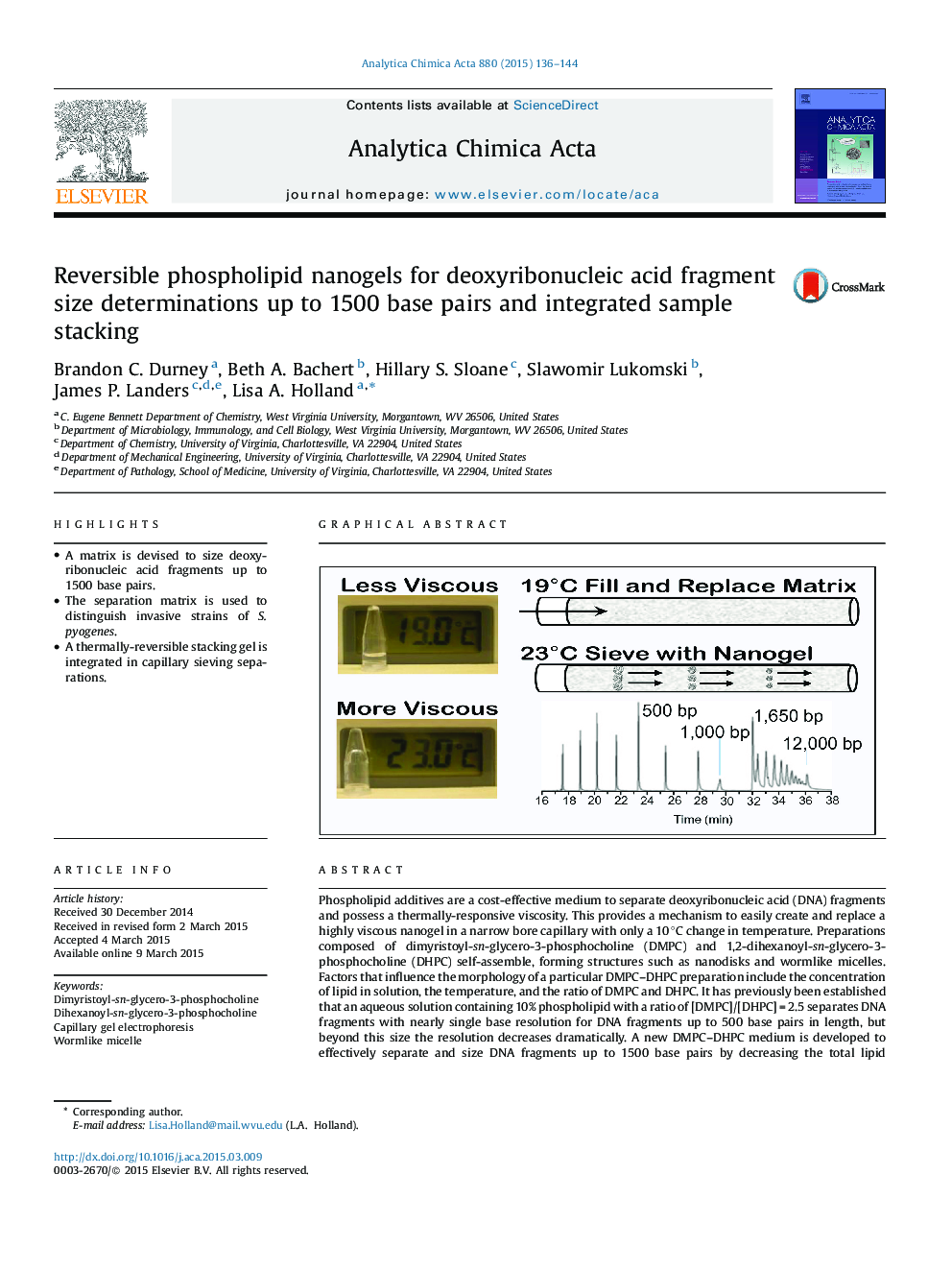| کد مقاله | کد نشریه | سال انتشار | مقاله انگلیسی | نسخه تمام متن |
|---|---|---|---|---|
| 1163297 | 1490952 | 2015 | 9 صفحه PDF | دانلود رایگان |
• A matrix is devised to size deoxyribonucleic acid fragments up to 1500 base pairs.
• The separation matrix is used to distinguish invasive strains of S. pyogenes.
• A thermally-reversible stacking gel is integrated in capillary sieving separations.
Phospholipid additives are a cost-effective medium to separate deoxyribonucleic acid (DNA) fragments and possess a thermally-responsive viscosity. This provides a mechanism to easily create and replace a highly viscous nanogel in a narrow bore capillary with only a 10 °C change in temperature. Preparations composed of dimyristoyl-sn-glycero-3-phosphocholine (DMPC) and 1,2-dihexanoyl-sn-glycero-3-phosphocholine (DHPC) self-assemble, forming structures such as nanodisks and wormlike micelles. Factors that influence the morphology of a particular DMPC–DHPC preparation include the concentration of lipid in solution, the temperature, and the ratio of DMPC and DHPC. It has previously been established that an aqueous solution containing 10% phospholipid with a ratio of [DMPC]/[DHPC] = 2.5 separates DNA fragments with nearly single base resolution for DNA fragments up to 500 base pairs in length, but beyond this size the resolution decreases dramatically. A new DMPC–DHPC medium is developed to effectively separate and size DNA fragments up to 1500 base pairs by decreasing the total lipid concentration to 2.5%. A 2.5% phospholipid nanogel generates a resolution of 1% of the DNA fragment size up to 1500 base pairs. This increase in the upper size limit is accomplished using commercially available phospholipids at an even lower material cost than is achieved with the 10% preparation. The separation additive is used to evaluate size markers ranging between 200 and 1500 base pairs in order to distinguish invasive strains of Streptococcus pyogenes and Aspergillus species by harnessing differences in gene sequences of collagen-like proteins in these organisms. For the first time, a reversible stacking gel is integrated in a capillary sieving separation by utilizing the thermally-responsive viscosity of these self-assembled phospholipid preparations. A discontinuous matrix is created that is composed of a cartridge of highly viscous phospholipid assimilated into a separation matrix of low viscosity. DNA sample stacking is facilitated with longer injection times without sacrificing separation efficiency.
Figure optionsDownload as PowerPoint slide
Journal: Analytica Chimica Acta - Volume 880, 23 June 2015, Pages 136–144
